Introduction to Bamboo Fishing Rods
Bamboo fishing rods combine tradition with a classic feel. Anglers cherish them for their craftsmanship and performance. If you’re considering how to make bamboo fishing rods, know that it’s a labor of love. These rods are not just tools; they are art forms that reflect angling history.
Bamboo rods offer a connection to fishing at its most fundamental level. They bend and flex in a way that modern materials can’t replicate. Making one requires patience, skill, and attention to detail. This guide will take you through the steps to create your own bamboo rod, a unique piece with a personal touch.
From choice of bamboo to the final varnish, each step is crucial. You’ll learn how to select the right bamboo, prepare it, and craft it into a rod that’s both beautiful and functional. Whether you’re a seasoned angler or a DIY enthusiast, this journey will enhance your appreciation for this time-honored craft. So let’s begin the process of creating a bespoke bamboo fishing rod.
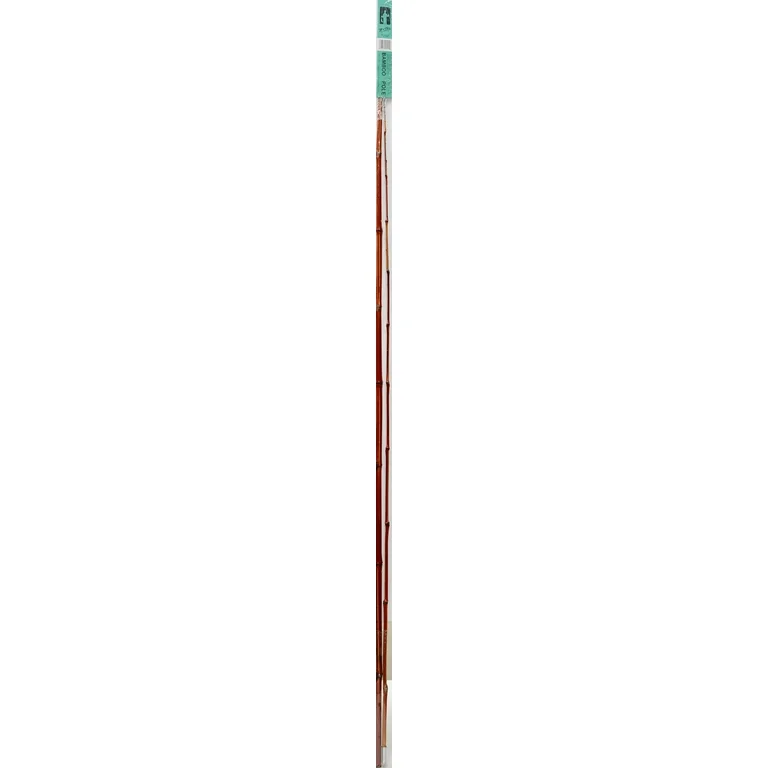 Selecting the Right Bamboo
Selecting the Right Bamboo
Choosing the right bamboo is the first critical step in how to make bamboo fishing rods. The quality of bamboo can greatly influence the rod’s flex, strength, and durability. Here are the key factors to consider when selecting bamboo for your fishing rod:
- Species: Not all bamboo is equal. Look for species like Tonkin or Madake bamboo, known for their high density and fiber structure.
- Age: Mature bamboo is ideal, usually around 5 to 6 years. Mature bamboo has better strength and flexibility compared to younger culms.
- Appearance: Examine the bamboo’s color and texture. It should be uniform with no signs of damage, discoloration, or irregular growth patterns.
- Straightness: Straight bamboo culms will make the process smoother and result in a better quality rod.
- Node Spacing: Bamboo with longer internodes or node spacing will have fewer interruptions, which is desirable in a fishing rod.
- Diameter: Ensure the diameter of the bamboo is consistent, as it will affect the tapering and action of the finished rod.
It’s essential to source your bamboo from reputable suppliers to guarantee the best quality material for your handcrafted rod. Remember, taking the time to choose the best bamboo will set the foundation for a high-quality, responsive, and aesthetically pleasing bamboo fishing rod.
Tools and Materials Needed
Before you start the process of making bamboo fishing rods, you’ll need to gather the right tools and materials. This set will help you achieve precise results and ensure that your rod is both durable and reliable. Here’s a list of items you should prepare:
- Fine-Toothed Saw: For cutting the bamboo into sections.
- Splitting Knife: To split the culms into strips.
- Plane: For smoothing and tapering the bamboo strips.
- Tapering Tools: To shape the rod to the desired taper.
- Sandpaper: For fine finishing of the bamboo surface.
- Binding Jig: To hold strips together during gluing.
- Glue: A strong, waterproof adhesive for binding strips.
- Varnish: To protect the rod and give it a glossy finish.
- Thread: For wrapping guides and ferrules onto the rod.
- Guides and Tip Tops: Essential hardware for the rod.
- Ferrules: If you’re making a multi-piece rod.
- Measuring Tools: For precision in cutting and shaping.
- Workbench: A stable work space is crucial.
When you have all these tools and materials at hand, you’re ready to begin splitting your selected bamboo and taking the next steps in crafting your bamboo fishing rod. Remember to work carefully and precisely, as attention to detail will reflect in the finished product. Making a bamboo fishing rod is a true art form; the quality of the tools you use can affect the quality of the rod you create.
Splitting the Bamboo
Splitting the bamboo is a delicate task and a crucial step in how to make bamboo fishing rods. The following steps will guide you through the process to split your chosen bamboo into even, workable strips. Remember, precision is key, and careful splitting will set the stage for the quality of your fishing rod.
- Measure and Mark: Begin by measuring the bamboo culm. Mark equal sections to ensure even splitting.
- Initial Split: Use the fine-toothed saw to make a starter cut at the base of the culm.
- Further Splits: Insert your splitting knife into the cut. Tap it gently with a mallet to split the bamboo along its length.
- Control Splits: Guide the split to run straight by applying gentle pressure where necessary.
- Repeat: Continue splitting each section into halves until you have strips of the desired width. Pay attention to the internodes, aiming to keep them centered in the strips.
- Trim Excess: Once you have your strips, trim any excess material. Make sure they are of similar weight and dimension for the next steps.
Take your time during this part of the rod-making process. Rushing can cause the bamboo to split improperly, which might ruin the material. Each strip you create here will be refined later to form the actual rod, meaning that the more accurate your splits, the less work you’ll have shaping the rod blanks.
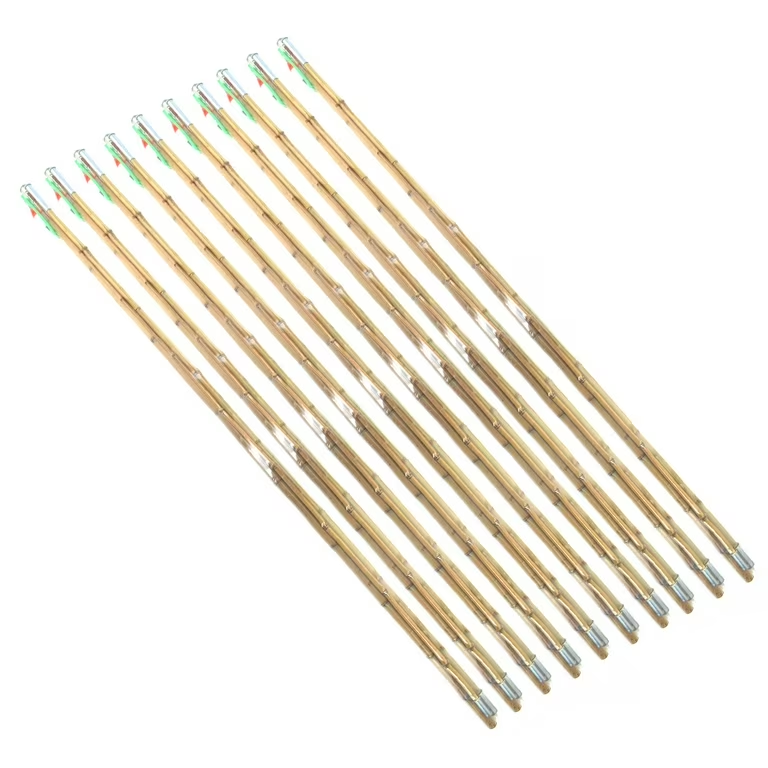 Shaping the Rod Blanks
Shaping the Rod Blanks
After splitting the bamboo, shaping the rod blanks is your next challenge. This stage will define the rod’s feel and performance. Each step should be done with care and precision to ensure your rod functions beautifully. Here’s how to shape the rod blanks for your bamboo fishing rod:
- Initial Shaping: Start by roughly shaping the strips with a plane. Aim for a rectangular cross-section.
- Establishing the Taper: The rod’s taper is vital for its flexibility. Use tapering tools to create a gradual thinning from butt to tip.
- Refinement: Sand the strips to refine their shape. They should fit together without gaps.
- Final Inspection: Check each strip. They must be straight, smooth, and uniform.
Through these steps, the character of your bamboo fishing rod emerges. A well-shaped blank results in a rod with excellent casting ability and resilience. Remember, patience is crucial. Each strip contributes to the overall curve and strength of the finished product, so take your time.
Binding and Gluing
Once you’ve shaped the bamboo strips for your fishing rod, you need to bind and glue them. This process secures the strips together to form a sturdy rod blank. Here are the steps you should follow to successfully bind and glue your bamboo fishing rod blanks:
- Align the Strips: Arrange the shaped bamboo strips side by side. Make sure the nodes are staggered for strength.
- Apply Glue: Spread a strong, waterproof glue evenly on each strip. This glue keeps the rod water-resistant and durable.
- Bind the Strips: Using a binding jig, tightly wrap the glued strips together. This ensures they bond well.
- Let it Dry: Allow the glue to set. This can take several hours or as advised by the glue manufacturer.
- Check for Gaps: After drying, inspect the rod for any gaps or areas where the glue didn’t hold. Reapply glue if needed.
Binding and gluing are key in how to make bamboo fishing rods. They give your rod its shape and flexibility. Make sure each step gets done with care. The strength of your rod depends on the quality of binding and gluing. After these steps, you’re close to having a fully functioning bamboo fishing rod.
Finishing the Rod
Once you have bound and glued the bamboo strips, it’s time to finish your fishing rod. This step adds durability and a polished look to your rod. Follow these key points to finish your bamboo fishing rod:
- Sanding: Carefully sand the rod for a smooth surface. Use fine-grit sandpaper to avoid scratches.
- Sealing: Apply a sealant to protect the bamboo from moisture. This step is critical for longevity.
- Varnishing: Apply a high-quality varnish in even coats. Let each coat dry before applying the next.
- Wrapping Guides: Attach the guides with thread. Ensure they are firmly in place and evenly spaced.
- Applying Finish to Wraps: After wrapping, coat the thread with a finish to protect it from the elements.
- Installing the Ferrule: If your rod is multi-piece, attach the ferrules securely. This keeps the rod pieces together when assembled.
- Final Inspection: Check the rod carefully. Make sure all parts are secure and the finish is even.
Completing these steps ensures that your bamboo fishing rod looks great and performs well. Remember, the finishing touches can make a big difference in your rod’s quality. Take your time to do it right, and you’ll have a bamboo fishing rod that not only fishes well but also stands as a testament to your craftsmanship.
Customizing Your Bamboo Fishing Rod
After you have crafted the basic structure of your bamboo fishing rod, you can start customizing it. This allows you to tailor the rod to your fishing style and aesthetic preferences. Here are some ways to add personal touches to your bamboo fishing rod:
- Handle Design: Choose a handle that fits your grip comfortably. Cork or hardwood are popular choices.
- Engraving: Add initials or designs to the rod. This personalizes your tool and makes it unique.
- Color Accents: Use colored threads for wrapping guides. Pick colors that reflect your style.
- Ferrule Choices: Select ferrules that match your needs. Brass or nickel silver are both functional and stylish.
- Reel Seat: Install a reel seat that complements your rod’s design. Ensure it’s also practical for use.
By customizing your rod, you create something that’s truly unique to you. It’s not just a fishing tool; it’s a reflection of your passion for angling. With these personal touches, your bamboo fishing rod becomes more than an object — it’s a piece of art. Continue to hone your skills, and enjoy the creative process of making your rod one-of-a-kind.
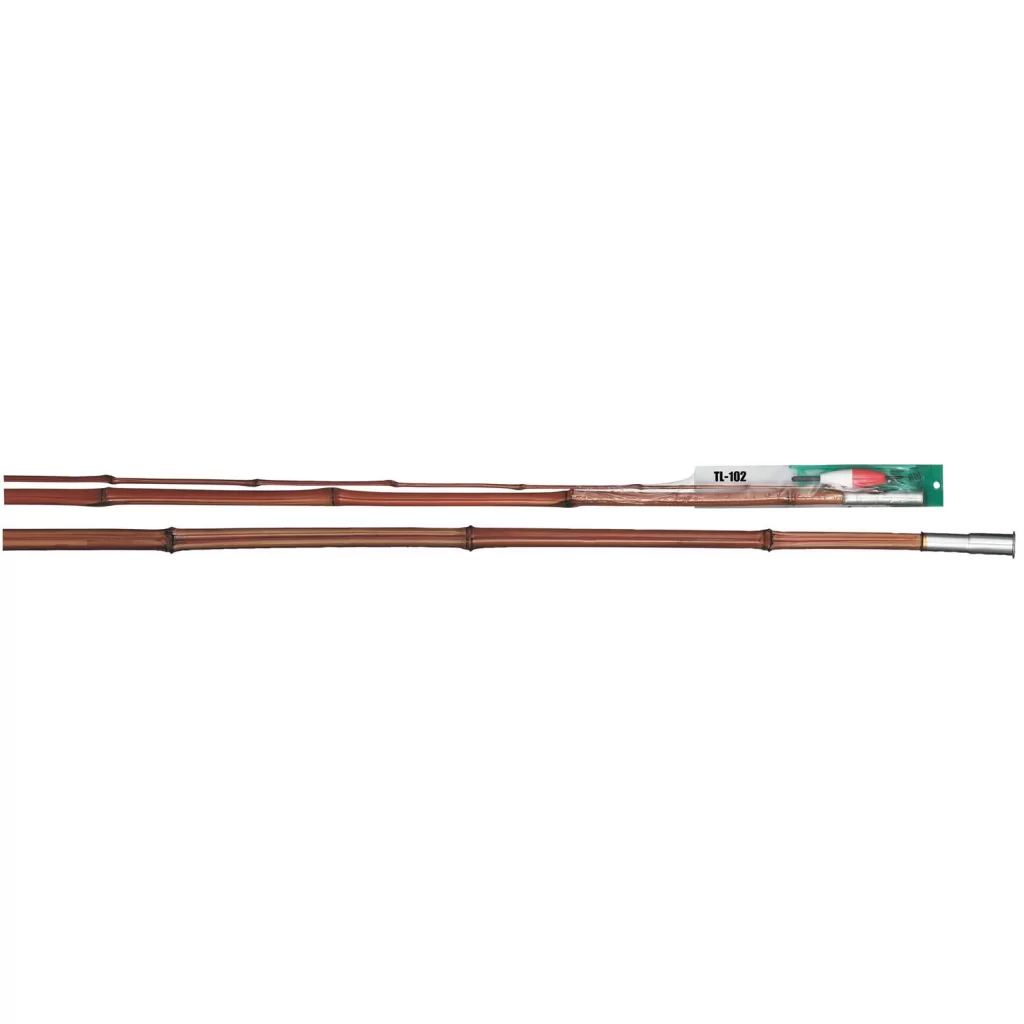 Maintenance and Care
Maintenance and Care
Caring for your bamboo fishing rod ensures it lasts for many years. Here are steps to keep it in top shape:
- Clean Regularly: Wipe your rod with a damp cloth after each use. Remove dirt and salt.
- Dry Thoroughly: After cleaning, dry your rod with a soft cloth. Never store it wet.
- Store Correctly: Keep your rod in a cool, dry place. Avoid direct sunlight and heat.
- Check for Damage: Inspect the rod regularly for signs of wear or damage. Look at the guides and ferrules.
- Apply Wax: Occasionally, wax the ferrules to ensure they fit smoothly.
- Re-Varnish: If the finish looks dull, consider re-varnishing the rod. This protects the bamboo.
- Avoid High Pressure: Don’t force the rod into extreme bends. It can cause breaks.
- Treat with Care: Handle your rod gently. It’s a delicate tool, not indestructible.
By following these maintenance tips, you’ll extend your bamboo fishing rod’s life and preserve its performance and beauty. Regular care keeps it reliable for your angling adventures.
Sustainable Practices in Bamboo Rod Making
Sustainability is increasingly important in all crafts, including rod making. Here’s how to make your bamboo fishing rods in an environmentally friendly manner.
Sourcing Sustainable Bamboo
Choose bamboo that is harvested sustainably to minimize environmental impact. Look for suppliers that practice responsible harvesting and ensure that bamboo is replanted after harvesting to maintain ecosystem balance.
Eco-Friendly Finishes
Opt for varnishes and sealants that are low in volatile organic compounds (VOCs) and environmentally friendly. These finishes protect your rod without introducing harmful chemicals into the environment.
Recycling and Upcycling
Recycle scrap bamboo by repurposing it for other projects or upcycling it into accessories such as rod holders or decorative items. This reduces waste and maximizes the use of the materials you’ve carefully selected.
Minimizing Waste
Plan your rod-making projects carefully to minimize waste. Measure accurately and use all parts of the bamboo stalks to ensure that every piece is utilized efficiently. Additionally, compost any organic waste generated during the process to further reduce your environmental footprint.
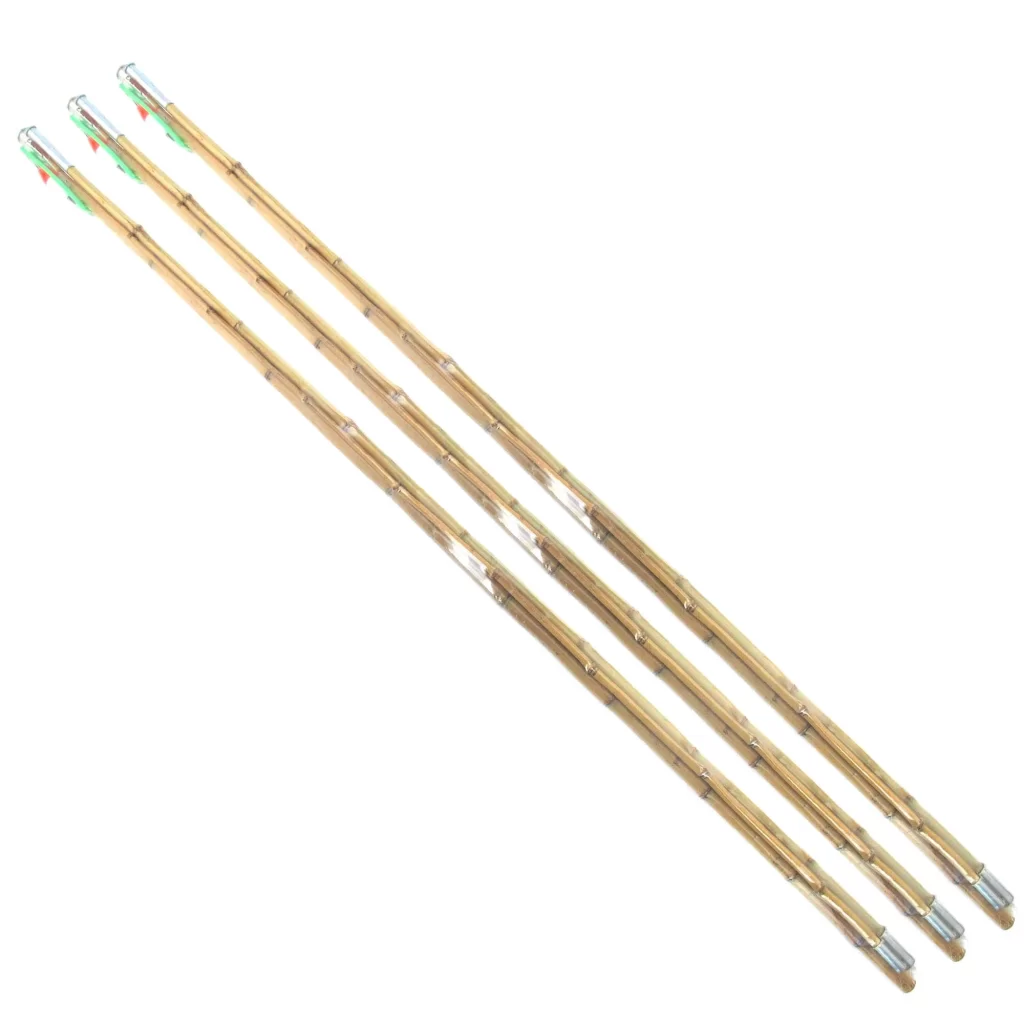 Showcasing Your Handmade Bamboo Fishing Rod
Showcasing Your Handmade Bamboo Fishing Rod
Creating your bamboo fishing rod is an achievement worth showcasing. Here are some ways to display and share your craftsmanship.
Personal Use and Enjoyment
Take pride in using your handcrafted rod during fishing trips. The personal connection and satisfaction from using a rod you made yourself enhance the overall fishing experience.
Gifts and Custom Orders
Handmade bamboo fishing rods make thoughtful and unique gifts for fellow fishing enthusiasts. Offer custom rod-making services to friends and family, tailoring each rod to their specific preferences and needs.
Selling Your Creations
If you’ve mastered the art of making bamboo fishing rods, consider turning your passion into a business. Sell your rods at local markets, online platforms, or through fishing gear shops. Highlight the craftsmanship, customization options, and quality of your rods to attract customers.
Participating in Exhibitions
Showcase your rods at craft fairs, fishing expos, and rod-making competitions. These events provide opportunities to network with other enthusiasts, gain recognition, and receive valuable feedback on your work.
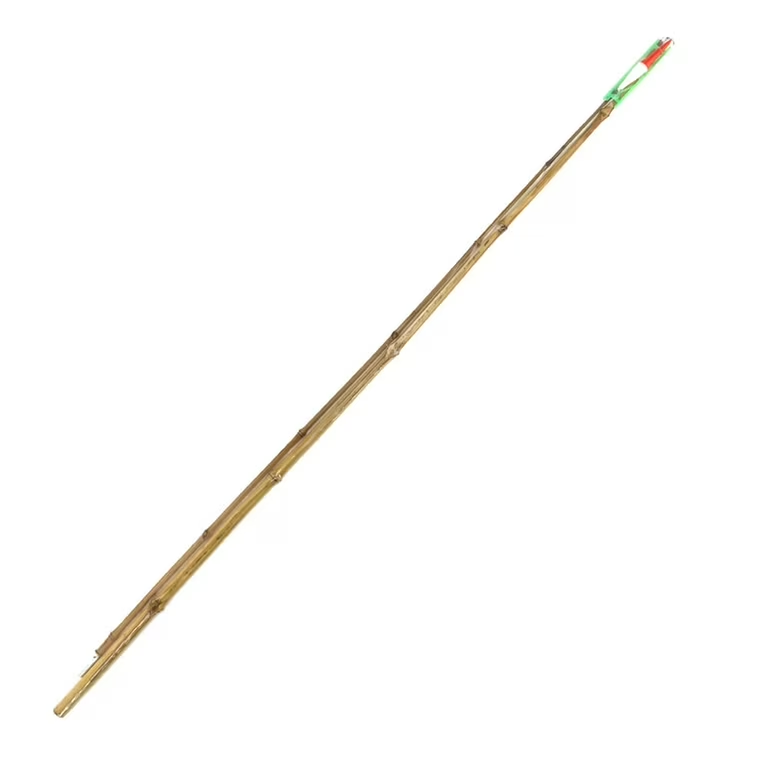 Conclusion: Embrace the Craftsmanship of How to Make Bamboo Fishing Rods
Conclusion: Embrace the Craftsmanship of How to Make Bamboo Fishing Rods
Mastering how to make bamboo fishing rods is a fulfilling journey that combines tradition, skill, and creativity. By carefully selecting quality bamboo, following meticulous crafting techniques, and embracing sustainable practices, you can create exceptional rods that not only perform well but also reflect your personal style and dedication. Whether you’re seeking a new hobby, aiming to enhance your fishing experience, or aspiring to share your craftsmanship with others, making bamboo fishing rods offers endless possibilities for growth and satisfaction. Dive into this timeless craft and enjoy the rewards of creating your very own bamboo fishing rods.